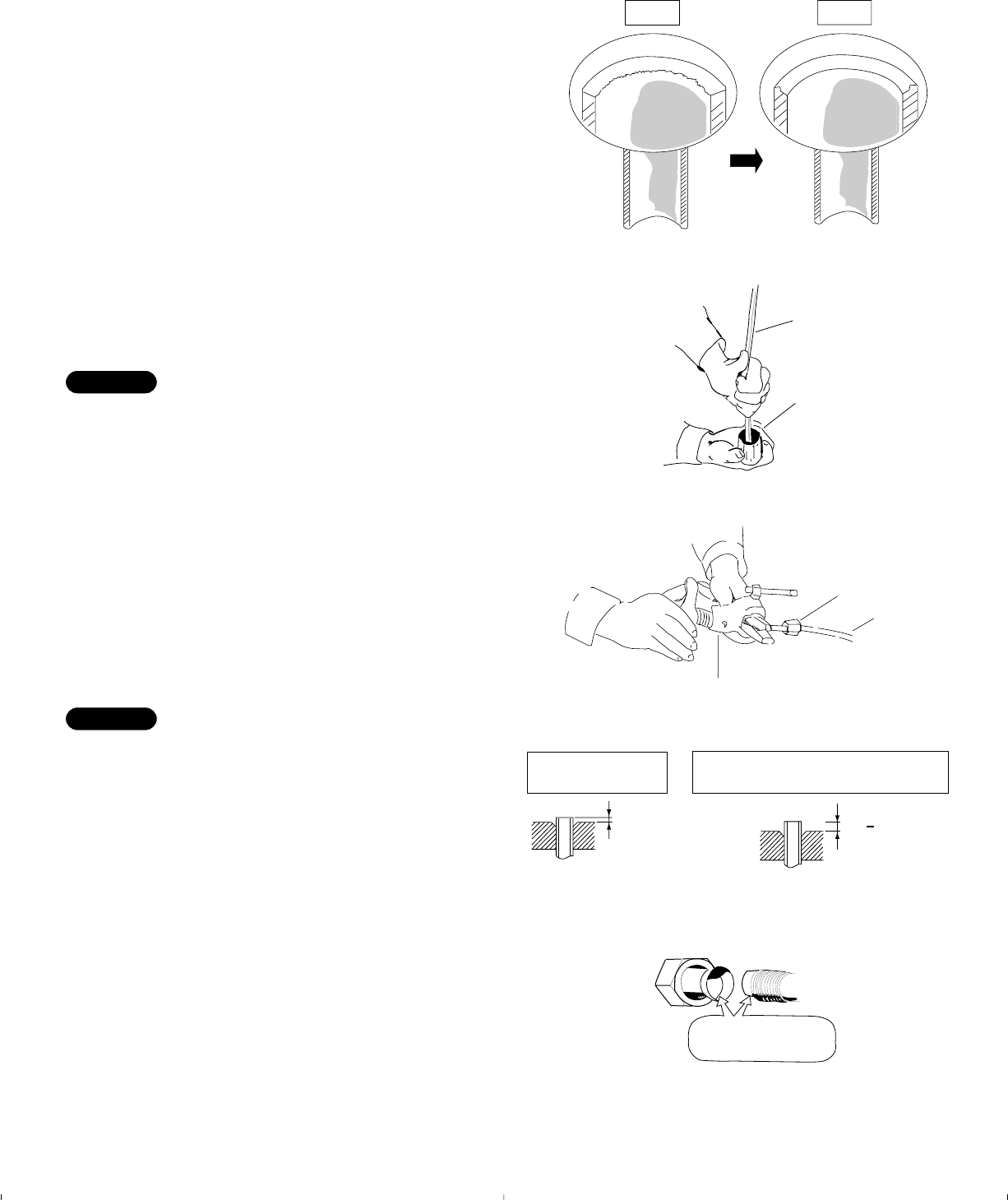
19
Deburring
Before
After
Fig. 37
Reamer
Copper
tubing
Fig. 38a
Flare tool
Flare nut
Copper
tubing
Fig. 38b
Apply refrigerant
lubricant here and here
Fig. 39a
8. How to Process Tubing
The narrow tubing side is connected by a flare nut, and
the wide tubing side is connected by brazing.
8-1. Use of the Flaring Method
Many of conventional split system air conditioners employ the
flaring method to connect refrigerant tubes which run
between indoor and outdoor units. In this method, the copper
tubes are flared at each end and connected with flare nuts.
8-2. Flaring Procedure with a Flare Tool
(1) Cut the copper tube to the required length with a tube
cutter. It is recommended to cut approx. 12 to 16 in.
longer than the tubing length you estimate.
(2) Remove burrs at the end of the copper tube with a tube
reamer or file. This process is important and should be
done carefully to make a good flare. (Fig. 37)
When reaming, hold the tube end downward and be sure
that no copper scraps fall into the tube. (Fig. 38a)
(3) Remove the flare nut from the unit and be sure to
mount it on the copper tube.
(4) Make a flare at the end of copper tube with a flare
tool.
*
(Fig. 38b)
(
*
Use “RIGID
®
” or equivalent.)
(5) Use the special flare tool for R410A for making a flare.
If the conventional flare tool (for R22) is used, the
flared portion of the tubing should protrude 1.0 to
1.5 mm. (Fig. 38c)
A good flare should have the following characteristics:
●
inside surface is glossy and smooth.
●
edge is smooth.
●
tapered sides are of uniform length.
8-3. Caution before Connecting Tubes Tightly
(1) Apply a sealing cap or water-proof tape to prevent dust
or water from entering the tubes before they are used.
(2) Apply refrigerant lubricant to the matching surfaces
of the flare and union before connecting them
together. This helps to reduce gas leaks. (Fig. 39a)
NOTE
NOTE
0 to
0.5 mm
Fig. 38c
When R410A
flare tool is used
1.0 1.5 mm
When conventional flare tool is
used (clutching method)
Flare the tubing by 1.0 to 1.5 mm.
(See 11. REFRIGERANT R410A: SPECIAL PRECAUTIONS)


















